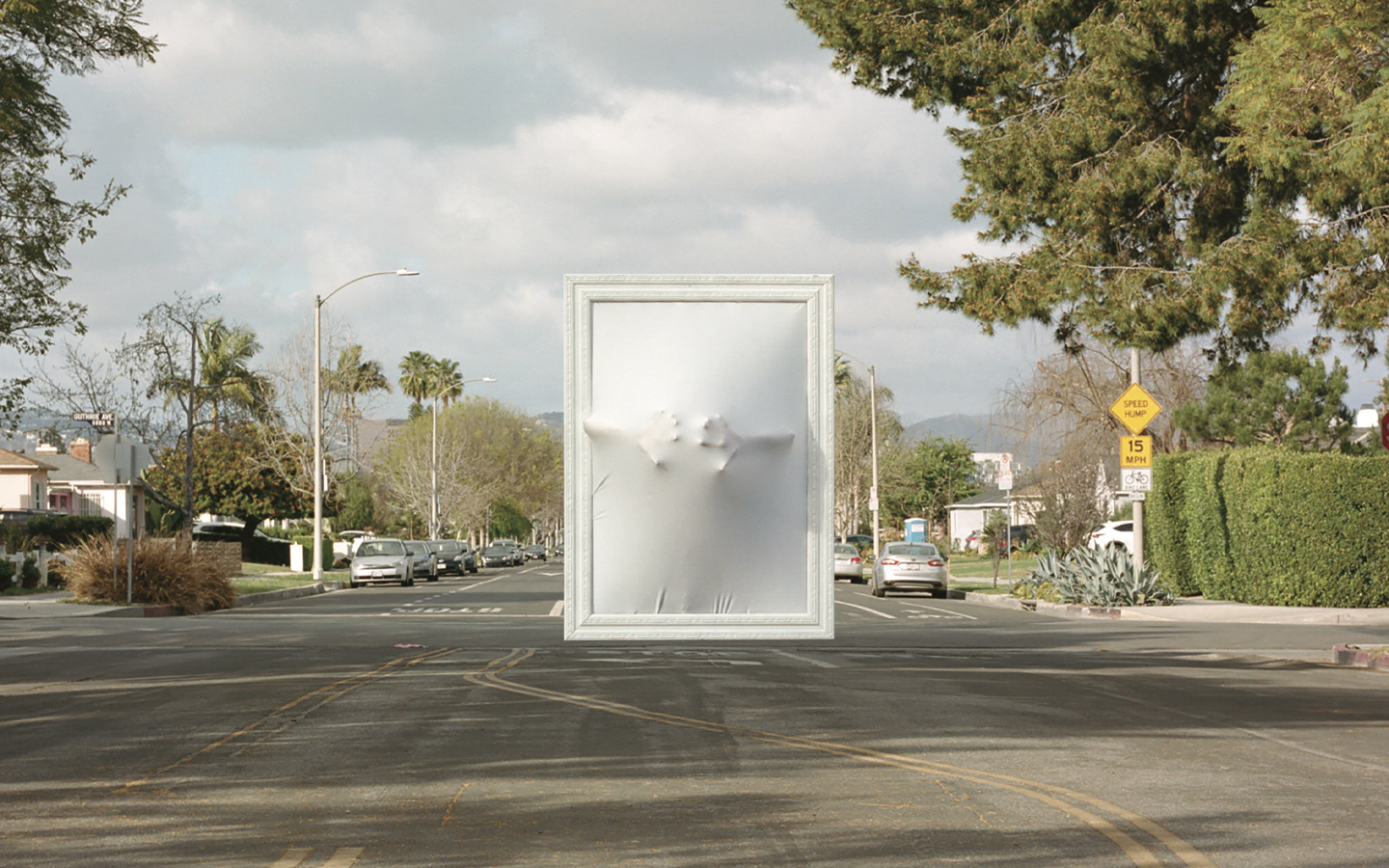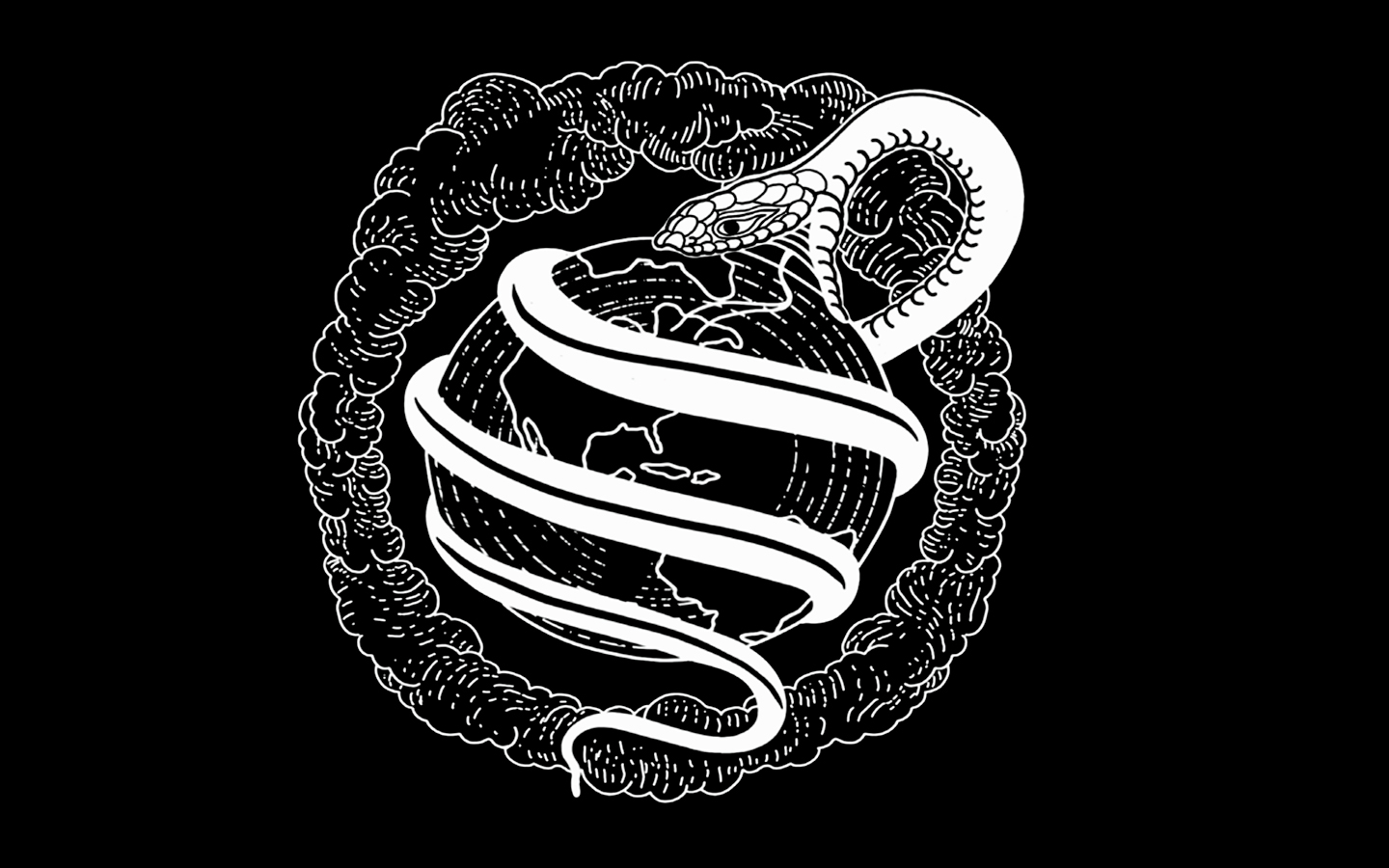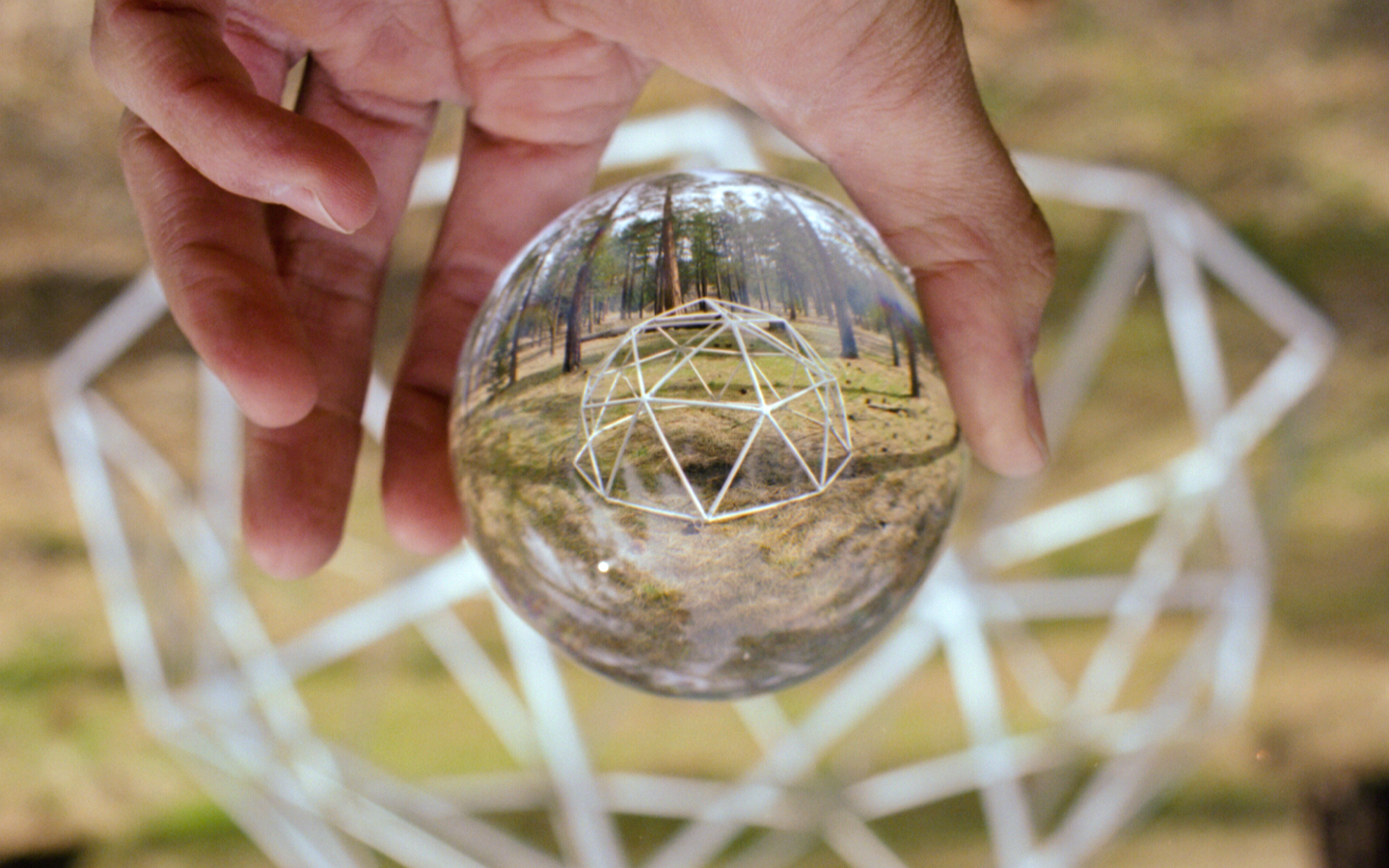
Are we living in a simulation?
TEXT GREG SALYER, Ph.D.
VISUAL NIKO SONNBERGER
No, of course not.
But wait.
The question is trickier than it initially appears. Let us begin with the most conventional understanding of the sentence. A computer simulation is not something one “lives in.” We live in “the world,” of course, which is real, is it not?
Already we are into some deep philosophical and religious questions. What is the “real world”? How do we know this world? Do we actually know it? How does it differ from a simulation?
These questions belong to the philosophical discipline of epistemology, or the nature of knowledge. The word comes from the Greek episteme, by way of epistasthai, epi “over” + histasthai “stand” = “to overstand.” If you are not current on your Ancient Greek, think of it this way: epistemology asks how we know what we know. It zooms out from what we know to explore how we know it, so it is a way of understanding (“standing upon” in Greek) by “overstanding.” The great Greek engineer Archimedes said, “Give me a place to stand and with a lever I will move the whole world.” Epistemology is that lever for “overstanding,” or knowing how we know.
So, how do we know that the world exists? In one of the first philosophical explorations of the mind, “the world” was both the beginning of doubt and the last thing proved to exist, and the “real world” appears only through some dubious reasoning. You may know of Rene Descartes (1596–1650), especially his Latin phrase cogito ergo sum, or “I think; therefore, I am.” Descartes asked a question not dissimilar from the one we are asking here; namely, “what do I know?” To answer this question, Descartes decided to doubt everything he could, and he began with his sense data. How can a candle be hot and wet at night and cold and hard in the morning? What are dreams made of, and can I trust them? Of course, with his method of radical doubt, Descartes could not trust his senses, whether awake or asleep, so the first thing to fall in the march of doubt was “the world.” If we cannot trust our senses that give us the world, what can we trust but cogito ergo sum—that I am sitting here wondering what I can trust? Four hundred years later, we can explore that question again in terms of virtual reality and computer simulations. In fact, Descartes went there himself. Imagine if he stopped with cogito ergo sum. He would have proved only that his mind (and his alone) existed. That is solipsism and quite inadequate for his purposes and context, so he needed to prove that the world exists, along with God. He begins with God by arguing that God was an idea in his mind that was greater than his mind; therefore, God exists. And among those ideas of God in his mind was the idea that God is benevolent and would not deceive him. So, for Descartes, we are living in a simulation—God’s simulation.
Bishop George Berkeley (for whom the university is named) also had an interesting perception of the world, one that can also be captured in a Latin phrase—esse est percipi or “to be is to be perceived.” You may already know Berkeley, if not in name then by his famous question, put colloquially as, “If a tree falls in a forest and no one is around to hear it, does it make a sound?” Though he was on the other side of Descartes in the philosophical argument about knowledge, Berkeley also locates the mind as essential to perception. In fact, he argues that all we perceive are ideas:
But say you, surely there is nothing easier than to imagine trees, for instance, in a park, or books existing in a closet, and no body by to perceive them. I answer, you may so, there is no difficulty in it: but what is all this, I beseech you, more than framing in your mind certain ideas which you call books and trees, and at the same time omitting to frame the idea of any one that may perceive them? But do not you yourself perceive or think of them all the while? This therefore is nothing to the purpose: it only shows you have the power of imagining or forming ideas in your mind; but it doth not shew that you can conceive it possible, the objects of your thought may exist without the mind: to make out this, it is necessary that you conceive them existing unconceived or unthought of, which is a manifest repugnancy. When we do our utmost to conceive the existence of external bodies, we are all the while only contemplating our own ideas.
So, both rationalist Descartes and empiricist Berkeley, major figures in the debate about epistemology, would find much fascination and even evidence for their positions in a contemporary computer simulation. For both philosophers, the world is a simulation generated by our minds (with help from the deity, of course).
Religions, too, have myths that suggest the world as we know it is a simulation of some kind. The oldest and richest of these is from ancient India and concerns the preserver god Vishnu. Depictions of Vishnu are myriad and profound, but one of the most interesting and relevant to our purposes is Vishnu sleeping on Shesha, the cosmological serpent. During his slumber, he dreams of the universe—our universe. Accordingly, and to quote Edgar Allan Poe, “all that we see or seem is but a dream within a dream.” When Vishnu awakes, his dream—and our reality—are gone. The story and its meaning are a lot more nuanced than this brief rehearsal, but the idea that we are god’s dream is very much like the idea that we are living in a computer simulation.
One of the most vibrant and dramatic works of virtual reality is found in the Mayan “council book,” or the Popol Vuh. Brilliant readers of the story of the stars, the Maya recorded it all as a great narrative unfolding in nested emergences over the many cycles of time. In the story there are two sets of twins, a group called “the hundred boys,” a gnarly crocodile, and a soccer match in hell with a ball made of a head. The common refrain in the text is, “How shall it be sown, and how shall it dawn?” The mixed metaphors here have a literal grounding because the story is in fact the story of the stars and planting corn. Characters are constellations who are “sown” beneath the horizon at one point in the year and “dawn” when they reappear, and the planting and harvesting of corn fell along the plot lines of the story. For the ancient Maya, cosmic life was played out on a screen called the sky and enacted upon a palette called the earth.
Indigenous mythology of the Australian continent contains a fascinating concept of “the Dreamtime,” a time when ancestral beings not only created the world but gave aboriginal culture its ways of knowing and doing. Even though it involves an act of creation, of something formless being formed, the Dreamtime is timeless, an “everywhen,” as one scholar puts it. Moreover, these great ancestral beings walked all over the continent, leaving behind various marks in the landscape. Their effects were also auditory in the form of “songlines,” invisible, aural, and mythological realities in the form of dream tracks on the landscape. Aborigines can follow their path if they know the song. Singing the song in a ceremonial way allows the sojourner to follow an ancestor in the act of creation, which in itself promotes harmony and healing, not to mention orientation in a harsh landscape. The Dreaming and the songlines that emerge from them are far too nuanced to explain here, but they do serve one purpose in helping to answer our question: they offer a highly sophisticated and transcendent simulation of the world that people live in to this day. In fact, for aboriginal peoples living on their land, it is the Dreamtime that is ultimately real, not the everyday world.
There are other examples that could be adduced to show that living in a simulation is neither a new nor an uncommon notion in the history of the human imagination. To date, our simulations have come from gods (in mythology) or our own minds (in philosophy), but computer simulations are much the same, that is, generated (ultimately) by human knowledge and as real as dreams—which, in the context of the dreamer, are completely real.
There is a contemporary philosopher who has made the reality of simulation explicit and compelling. Jean Baudrillard thought that symbol systems like language and images created what he termed “simulacra and simulation.” A simulacrum is simply a likeness or image, while a simulation has the added sense of falseness or pretense. Both simulacra and simulations are now real, or as Baudrillard terms it, hyperreal. In his 1981 work titled Simulacra and Simulation, Baudrillard explains these concepts by interpreting a short story by Jorge Luis Borges titled “On Exactitude in Science,” in which the art of cartography in this imagined world became so precise that the map of the empire ended up covering the territory. This, Baudrillard argues, is “hyperreality,” something we live in now.
Today abstraction is no longer that of the map, the double, the mirror, or the concept. Simulation is no longer that of a territory, a referential being, or a substance. It is the generation by models of a real without origin or reality: a hyperreal. The territory no longer precedes the map, nor does it survive it. It is nevertheless the map that precedes the territory — precession of simulacra — that engenders the territory, and if one must return to the fable, today it is the territory whose shreds slowly rot across the extent of the map. It is the real, and not the map, whose vestiges persist here and there in the deserts that are no longer those of the Empire, but ours. The desert of the real itself.
“The world,” that concept that was so real that we could assume its existence without proving it, is now “hyperreal,” that is, a simulacrum. For Baudrillard, the movement from the image toward the simulacrum has happened in four stages:
It is the reflection of a basic reality.
It masks and perverts a basic reality.
It masks the absence of a basic reality.
It bears no relation to any reality whatever: it is its own pure simulacrum.
In the first case, the image is a good appearance: the representation is of the order of sacrament. In the second, it is an evil appearance: of the order of maleficence. In the third, it plays at being an appearance: it is of the order of sorcery. In the fourth, it is no longer in the order of appearance at all, but of simulation.
The epigraph to Baudrillard’s book now makes sense: “The simulacrum is never that which conceals the truth—it is the truth which conceals that there is none. The simulacrum is true.”—Ecclesiastes. And just to put a fine point on the argument, that statement is not from the book of Ecclesiastes in the Bible.
Are we living in a computer simulation? The question itself was posed by philosopher Nick Bostrom in 2003:
This paper argues that at least one of the following propositions is true: (1) the human species is very likely to go extinct before reaching a “posthuman” stage; (2) any posthuman civilization is extremely unlikely to run a significant number of simulations of their evolutionary history (or variations thereof); (3) we are almost certainly living in a computer simulation. It follows that the belief that there is a significant chance that we will one day become posthumans who run ancestor-simulations is false, unless we are currently living in a simulation.
Propositions like these are both fun and flawed. It reminds me a bit of Anselm’s ontological argument for the existence of God:
God is that being than which no greater being can be conceived.
It is greater to exist than not to exist.
Therefore, God exists.
Ok, fine, but this reeks of linguistic conjuring and logical trickery. A student in one of my philosophy classes turned in an assignment that read:
This assignment is that assignment than which no greater paper can be conceived.
It is greater to exist than not to exist.
Therefore, this assignment exists.
She got an A.
My point is actually much simpler and requires no such philosophical gymnastics. The world is more a projection of our minds and mythologies than anything else, and we have generated such projections since we have had minds and mythologies. So to ask if we are living in a computer simulation requires only that we reimagine the projector, not the projection. Are we living in a computer simulation? I do not know, but I would not be a bit surprised if we are.
You may also like
Lucid Dreaming
Dreams give us a nightly opportunity, without payment or aid of a shaman, to connect with the realms
Issue 7: Existence
Issue 7 spans three main realms: physics, psychology, and philosophy. What we are, who we are, and w
How To Be on Earth
We have an opportunity to reconsider what we deem essential—and determine the sacrifices we must m




